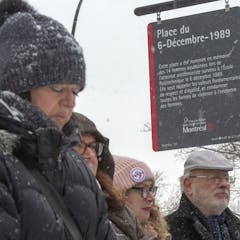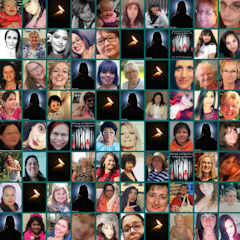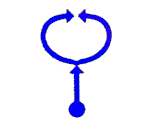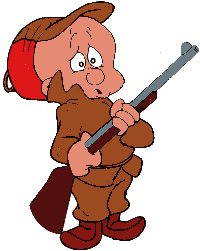FEMINISTS BY A LEBANESE CANADIAN MALE
https://plawiuk.blogspot.com/search?q=LAPINE
https://plawiuk.blogspot.com/search?q=MONTREAL+MASSACRE
It’s possible that I shall make an ass of myself. But in that case one can always get out of it with a little dialectic. I have, of course, so worded my proposition as to be right either way (K.Marx, Letter to F.Engels on the Indian Mutiny)




CBC Sun Day report ran this amazing piece of forgotten history. I left the following comment on their web site;Revisiting A Canadian Tragedy
As America grieves the victims of the Virginia Tech massacre, we take you back to 1975, when a shooting spree at a school in Brampton, Ontario, shocked the country. We bring you eyewitness accounts, and we'll find out what we've learned.
Tags
shootings, Montreal, DawsonCollege, CGEP, gunregistry, gun-contol, murder, crime, Canada, Quebec, Harper, Conservatives, Government, Toews, Gill, Dawson, College, CGEP, Montreal, Massacre, shooting, crime, Columbine,Toews, farmers,duckhunters,Kimveer Gill, Cho Seung-Hui, Dawson College, Virginia Tech, College shootings, Montreal, Massacre, shooting, crime, Columbine, video, videogaming, movies, firstpersonsooters, Reich, emotional plague

 Listen Little Man
Listen Little Man For you are afraid of life, Little Man, deadly afraid. You will murder it in the belief of doing it for the sake of "socialism," or "the state," or "national honor," or "the glory of God."
I recognized the deadly fear of the living in you, a fear which always makes you set out correctly and end wrongly. You had the happiness of humanity in your hands, and you have gambled it away.
You yourself create all your misery, hour after hour, day after day. You think the goal justifies the means. You are wrong: The goal is in the path on which you arrive at it. Every step of today is your life of tomorrow. You stand on your head and you believe yourself dancing into the realm of freedom.
You could have long since become the master of your existence, if only your thinking were in the direction of truth. You are cowardly in your thinking, Little Man, because real thinking is accompanied by bodily feelings, and you are afraid of your body. Many great men have told you: Go back to your origin - listen to your inner voice - follow your true feelings - cherish love.

Photograph Source: Heritage Auctions – Public Domain
My recent non-fiction books were published by Baraka Books of Montreal, headed by a Quebecer, Robin Philpot. This places me in a tradition that extends back to 1856, when Benjamin Drew edited an anthology entitled A North-Side View of Slavery. Included were the testimonies of fugitive slaves who could say in Canada what they were forbidden from speaking in the United States. The muting of Black opinion still occurs.
Even two top Black anchors for CNN and MSNBC confessed that they’re prohibited from making some points. This muting of Black voices is also happening in publishing. Zakiya Dalila Harris, the author of The Other Black Girl, has a character complain about how White authors have a better chance of getting their proposals to write about Black subjects accepted than Black authors.
I haven’t experienced such restrictions from Baraka Books or the CBC network where I have been interviewed. Moreover, it’s because of my visiting Montreal and Toronto on a book tour that I learned facts about John Wilkes Booth that were not covered in my education.
American students are taught that John Wilkes Booth was the lone assassin of Abraham Lincoln. But then they are informed that four were hanged because of the murder, including an innkeeper, Mary Surratt, who might have been innocent. Most are willing to leave it at that. So was I until I traveled to Canada. In 2012, Philpot took me on a walking tour of Confederates’ Montreal and pointed out where the Montreal St. Lawrence Hall Hotel and the Ontario Bank once stood. When he was killed, a note from the bank was found among Booth’s possessions. Booth and the Confederate conspirators were lodged at the St. Lawrence. He signed a guest’s ledger in 1864.
Some Canadians were hospitable to their Confederate guests. They believed that a divided nation would distract from the plans for annexing Canada, also known as British North America, to the United States. Invasions launched by Americans began in 1775 when the Continental Army invaded and again in 1812. Both attacks ended badly for the Americans. An 1866 invasion launched by the Fenian Brotherhood from Buffalo was also repelled.
Such was the affection that British Canadians held for the Confederate cause that after the war, when Jefferson Davis attended a performance at Montreal’s Theatre Royal, owned by John Buckland and his wife, actress Kate Horn, who were friends of Booth, the audience applauded and sang a rousing rendition of “Dixie.” Not only was there a Confederate presence in Montreal, but when I visited Toronto, I found that there had been a Confederate presence there as well. Booth visited the city 10-12 days in 1864.
According to Montreal, City of Secrets by Barry Sheehy, the Confederate Secret Service encouraged Booth to kill Lincoln, abandoning the original plan of kidnapping the president and holding him hostage.
Though depicted as a deranged individual in popular culture, Booth is remembered by both Canadians and Americans as a charmer. Women loved him. He and his brothers followed their father into the acting business, and Booth earned $20,000 per year and sometimes $1,000 per week, a high income in those days. His specialty was Shakespeare. He really stepped into his character. He cast himself as Brutus against the tyrant Lincoln. He was method before Lee Strasberg.
Booth would feel right at home in today’s Republican Party. He left a letter with his brother-in-law John S. Clarke which gave his reasons for the assassination.
It contains some of the ideas you hear from today’s American Right. That slave masters were “merciful.” According to Booth, the cruelty meted out to Blacks by slave masters was no different from the punishment northern fathers gave to their sons. This opinion has been repeated in American school books, which show slaves having a grand time in the South, where the fiddler was always on hand. But one wonders whether a northern father stripped his son and gave him 25 lashes, which is how Robert E. Lee treated a runaway slave, a woman. After the beating, he had brine smeared into her wounds. Robert E. Lee was a character right out of Poe. He believed that slaves needed “painful discipline.”
Like some Republicans, Booth believed that the slavers did Blacks a big favor by importing them from their homelands, which doesn’t explain the hundreds of slave revolts on ships conducted by Africans who wanted to stay home. Hollywood gives us one. He believed in States Rights, an idea cooked up by slaveholders like Thomas Jefferson, who feared that the North might federalize the slaves. Like some of today’s Republicans, Booth denies that the Civil War was fought over the issue of slavery but for “noble” causes, even though the states that seceded gave slavery the reason for doing so.
But Booth’s reason for killing Lincoln was Lincoln’s floating the idea of granting the franchise to Black soldiers. Booth was in the audience when Lincoln made the comment on April 11, 1865. He told a companion that he was going to kill Lincoln.
Depriving Blacks of the right to vote is the leading obsession of today’s Republican party.
Like Booth, many of those who invaded the Capitol on January 6th agree. They also believe that assassination is a way to protest a government with which you disagree. The insurgents also agree with Booth that the country should be White. Some of their leaders, however, a Black Cuban, a Hispanic, and a Vietnamese American, would have been considered mongrels in the 1980s when Robert Jay Matthews of The Order, a Neo-Nazi gang, shot it out with the FBI on Whidbey Island,state of Washington.. He was no blonde-haired, blue-eyed Aryan himself. Indian scientists who mapped the DNA of Indians found that the basis of Aryanism–that blonde, blue-eyed supermen invaded India–is a myth.
Another Person of Color passing for a white nationalist is Ron Watkins who has a Korean Mother,he promotes QAnon called,“ a discredited far-right conspiracy theory alleging that a cabal of Satan-worshiping pedophiles running a global child sex-trafficking ring is plotting against former President Donald Trump, who is battling them.With their silence, leaders of the Republican Party are giving their tacit approval to Booth’s ideas. No wonder Booth chic is occurring in the Republican Party. Until he was confronted by criticism, Senator Rand Paul was hanging out with a character called “The Southern Avenger.” He believed that Booth didn’t go far enough.
Booth’s act altered American history. The assassination paved the way for the Confederate Restoration; Lincoln was succeeded by Andrew Johnson, a slaver who believed that Blacks were barbaric and, unlike Lincoln, believed that Blacks should be denied the right to vote.
Northern crowds heckled Andrew Johnson with demands that Jefferson Davis be hanged. They also shouted “Remember New Orleans,” citing the massacre of Black men who had convened to protest the Black Codes, which denied them the franchise. Instead, Johnson let the rebels back in, and their ideas have survived in Congress to this day. However, his recommendation that Lee be punished “harshly” was challenged by General Grant. “on June 7, 1865, U.S. District Judge John C. Underwood in Norfolk, Virginia, handed down treason indictments against Lee, James Longstreet, Jubal Early, and others.” The judge and the grand jury wanted to send a message that no future insurrections in the United States would be allowed( emphasis added.) President Andrew Johnson and many Radical Republicans in the North wanted to see Lee punished for his crimes against the Union. This prompted Grant to meet with the President to discuss this problem, but there was no resolution until the general threatened to resign his commission. With Grant’s threat, President Andrew Johnson decided to have Judge John C. Underwood drop the charges because he realized that “the public would never support him over the far-more popular Grant.”
Reconstruction can be seen as a Northern attempt at Nation-building, and like the Afghan allies of the United States, the Black allies of the Union were abandoned, lynched and slaughtered by White nationalists mobs when the Union troops withdrew April 24, 1877. Some members of the mobs were probably foaming at the mouth like the Jan. 6 insurgents.
A shorter version of this article appeared on Ha’aretz.
Ishmael Reed is the author of The Complete Muhammad Ali.
MY FAVORITE MUMBO JUMBO





Here is the Harpocrites messaging on the Long Gun Registry that has not changed since the election, nor since this summer. Despite the recent shooting in Montreal it continues to be the message from the government and their media syncophants.
"Duck-hunters, farmers and law-abiding gun owners do not pose a threat to Canadians, criminals do,"
Public Safety Minister Stockwell Day said.
Justice Minister Vic Toews
That fight — the battle to ban the assault weapon that allowed Marc Lepine to murder his 14 victims in the blink of an eye — was a torturous fiasco, no matter which “side” you took.
The initial impulse, from traumatized students, from grieving families, from concerned Canadians everywhere, was just to do something to prevent dangerous characters from getting their hands on deadly weapons and ammo so easily.
But it somehow morphed into a billion-dollar registry that threatened to turn duck hunters and farmers into criminals — wasteful nonsense that neither satisfied nor protected anyone.
Shootings don’t vindicate gun registry
Some nut-bar with an illegal, automatic weapon opens fire on students at the downtown college, and supporters of the registry suggest it’s proof we need to keep forcing duck hunters and farmers to register their rifles and shotguns.
The message is clear duck hunters and farmers are the Tories electoral base. Not urban Canadians.
According to the 2001 Census there were 313,000 farmers in Canada, a population in decline.
And there is a severe decline in duckhunters in Canada.
In little more than a couple decades, two of every three duck hunters in Canada have vanished and the free- fall in numbers shows no sign of slowing. Sales of Migratory Bird Hunting Permits in Canada rose from 380,059 in 1966, peaking at 524,946 in 1978, before starting a long ride down to 197,584 in 1999. The outlook for the Canadian waterfowl hunting heritage is bleak. Hugh Boyd, Scientist Emeritus with the Canadian Wildlife Service has used population projections from Statistics Canada, and trends in permit sales to predict the number of waterfowl hunters in the future. His figures show that the number of duck hunters will continue to decline from 1999 levels, by 17% in the next two years, 49% in 7 years and by 64% over the next 10 years. Boyd also considered the influence of age in the trends. He found that the sharpest drops were occurring in the 15 to 24 year old age class, followed by 25 to 34 year olds. Projected permit sales for the 2001 season in these age classes are 14,100 and 19,700 respectively. There are zero sales of migratory bird hunting permits projected for persons under 35 years of age in 2006.
So this is who the Tories are courting with their pandering to get rid of the Long Gun registry, a disappearing population of less than a half million voters. Now I would call that a special interest group. Good luck in getting a majority next election.
See:
Tags
shootings, Montreal, DawsonCollege, CGEP, gunregistry, gun-contol, murder, crime, Canada, Quebec, Harper, Conservatives, Government, Toews, Gill, Dawson, College, CGEP, Montreal, Massacre, shooting, crime, Columbine,Toews, farmers,duckhunters,


"Just read your piece on the firearms P3 – quite a revelation. I am amazed we have never heard this before – congratulations for bringing it to light." Murray Dobbin, author of Paul Martin Canada's CEO